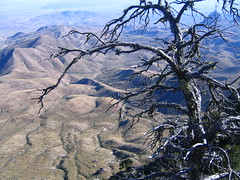I've been reading a book called "
The Brazilians" that my mother gave me for Christmas this year. The other day, I made it to Part III, "The Curse of Violence in Brazil." The description of violence in Rio Grande do Sul (the state where I'll be going) appeared to be the perfect setting for a
Cormac McCarthy novel:
"The history of Rio Grande do Sul, a cattle-raising, wheat-growing state in the extreme south of the country and on the borders with Uruguay and Argentina, is soaked in blood. The earliest inhabitants found themselves in constant conflict with warlike Indians, as well as with Spaniards who contested Portuguese control over the sparsely settled region.
"These ongoing struggles made violence part of everyday life...They also produced a tough, belligerent, freedom-loving breed of settler in whose veins mingled the blood of soldiers and adventurers, Portuguese colonists and runaway slaves, Spaniards and Indians. The region's horsemen, known as gauchos, were rugged, fearless fighters who worked the countless herds of wild cattle that roamed the immense southern grasslands.
"The tradition of violence in Rio Grande do Sul did not fade away once the borders between the Portuguese and Spanish colonies had been permanently fixed in the late eighteenth century. During the regency that ruled Brazil after the abdication of Dom Pedro I, a number of regional revolts erupted in various parts of the country. At the end of the nineteenth century, a savage civil war between two political factions tore the state apart. All kinds of atrocities were committed by both sides, the most gruesome involving captors using knives to slaughter prisoners by slitting their throats from ear to ear, the manner gauchos used to kill sheep.
"The violence marking the history of southern Brazil was qualitatively different from violence occurring elsewhere in the country. It did not arise from class conflicts. The clashes with the Spanish (and even the struggles against the Indians) were in the nature of battles between equals. nor did the violence have anything to do with the institution of slavery, inasmuch as relatively few slaves were imported into the region, whose economic well-being did not require an abundance of cheap labor." (p. 236-237)
However, according to the author of the book, Joseph A. Page, despite a historical difference in violence, Rio Grande do Sul is now on the same wavelength and experiences violence pretty similar to the rest of the country...definitely material for another blog entry.





No comments:
Post a Comment